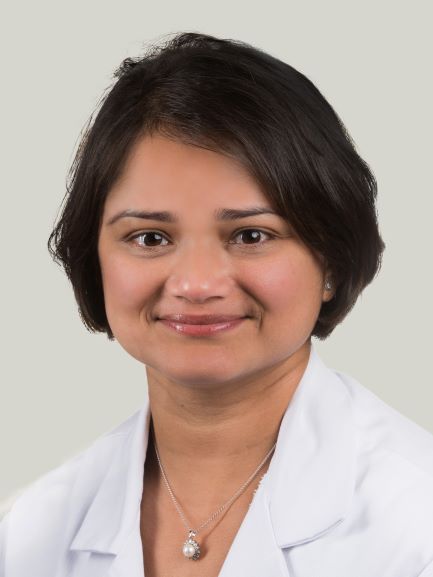Fatty liver disease: Diagnosis, prevention, and treatment with Sonali Paul, MD
By Anna Gomberg
Fatty liver disease affects 25% of the US and global population. Over time, it can lead to inflammation in the liver or nonalcoholic steatohepatitis (NASH) one of the most severe forms of nonalcoholic fatty liver disease (NAFLD). Nonalcoholic fatty liver disease is related to obesity, diabetes, high cholesterol, and high blood pressure, all metabolic conditions heavily influenced by lifestyle. As a progressive disease, without obvious symptoms, most patients remain unaware of their status until irreversible damage to the liver leads to cirrhosis (scarring and damage to healthy liver tissue), or liver cancer.
Sonali Paul, MD, Assistant Professor of Medicine and a hepatologist, explains, “What I want to emphasize to primary care providers, residents, and fellows is that when you encounter abdominal imaging, like ultrasounds, CTs or MRIs, that show fat in the liver, or blood work that shows elevated liver enzymes, don’t just tell the patient, ‘you have fatty liver—eat better, and exercise, and don’t worry about it.’ Persistent fatty liver over ten or twenty years can lead to cirrhosis, and then the problem becomes more serious. Patients should receive early treatment interventions to reverse their risk factors. Just seeing a hepatologist can be motivating for some people.”
Fatty liver disease occurs across the whole lifespan, even beginning in childhood. It is a rising cause of liver transplants in the United States. And most alarmingly, people with NASH are 38% more like to die from a cardiovascular event, like a heart attack.
To address this growing concern, the University of Chicago Digestive Diseases Center is now home to a Metabolic and Fatty Liver Clinic, led by professor Michael Charlton, MD, Director of the Center for Liver Diseases and Co-Director of the Transplant Institute. Under the clinic’s multidisciplinary approach, patients diagnosed with NAFLD see a hepatologist like Dr. Paul, who determines the stage of liver disease and rules out other causes. At the same time, patients see Assistant Professor Celeste Thomas, MD, an endocrinologist, and a dietitian, who advises on dietary and lifestyle changes and metabolic support.
“It really is a metabolic issue,” says Dr. Paul, “Because many of our patients have insulin resistance or diabetes, as well as high blood pressure and obesity. Working together allows us to treat the whole patient. If the associated conditions get better, fatty liver usually gets better. Fatty liver disease is really a whole person diagnosis.”
Emerging data supports a genetic predisposition for fatty liver disease in some populations, specifically Hispanics in the United States. Explains Dr. Paul, “Hispanic populations tend to have a greater risk of fatty liver disease, NASH, and advanced fibrosis. There is a genetic mutation involving the PNPLA3 gene, which is a gene that affects lipid/fat metabolism. These mutations disproportionately affect Hispanic populations. Depending on the specific mutation, preliminary data indicates that we can adapt a patient’s diet to better treat their fatty liver disease,” explains Dr. Paul.
There are several clinical trials at the University of Chicago, led by Dr. Charlton, which may be helpful to patients with fatty liver disease. “Some of the emerging diabetes medications could potentially be used as a treatment for fatty liver as well, and the late-stage clinical trials are very promising. It is encouraging to think of what the future will hold for our patients,” says Dr. Paul.

